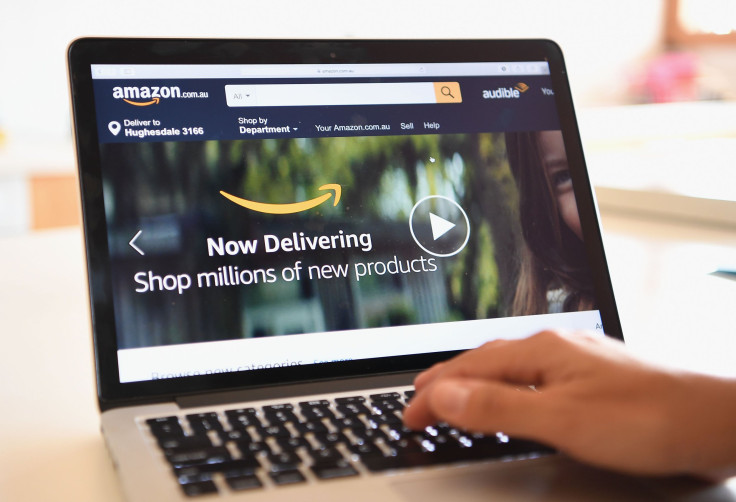The Only Reason Jeff Bezos Would Let Amazon Split Its Stock

Amazon.com (NASDAQ:AMZN) has done extremely well for its long-term shareholders, with its stock soaring almost 75% in just the past year and having posted fivefold gains since mid-2013. CEO Jeff Bezos has led the e-commerce giant successfully in pursuing a wide variety of new strategic decisions, ranging from its acquisition of Whole Foods Market to its increasing emphasis on cloud computing services to supplement the growing exposure it has to internet retail.
One source of frustration for some investors considering Amazon is that its share price has gotten extremely expensive. At more than $1,700 per share at this writing, even a single share of Amazon stock is beyond the reach of many investors. Last year, one shareholder called Bezos out on that fact and asked whether he would split Amazon stock in order to do something about it, and the CEO's answer was less than satisfying. In all likelihood, there's only one reason that Amazon will do a stock split, and the timing of such a move is almost certainly out of the e-commerce giant's control.
This story originally appeared in The Motley Fool.
A History Of Amazon Stock Splits
It's not as though Amazon and Bezos are categorically opposed to stock splits. Early in its history, when internet stocks were booming in the late 1990s, Amazon made stock splits frequently. In just a 15-month period from mid-1998 to late 1999, the company made three splits in quick succession, including a pair of 2-for-1 splits and a single 3-for-1 split. That consistently kept the stock price from climbing too far into the triple digits, a common reason at the time to allow smaller investors to be able to afford investing in companies.
Yet it's possible that the experience that followed soured Bezos on the stock split concept. After hitting its peak in December 1999, Amazon suffered a precipitous decline that would eventually lop roughly 95% off its share price. Because of the split moves that Amazon had made, shares fell into the single digits -- a level at which many investors start to view businesses as no longer being likely to survive over the long haul.
It was a long path back for the e-commerce giant. Amazon regained its footing and started to make progress throughout the 2000s, but for those who'd bought in at the highest levels, it wasn't until about a decade later that the share price made it back to triple-digit levels. In the run higher following the financial crisis, Amazon kept gaining ground, and many wondered when the seemingly inevitable stock split announcement would come. So far, though, those investors have been disappointed.
Looking For Guidance
Finally in 2017, one longtime shareholder spoke up on behalf of those seeking to buy shares of the company. At its annual shareholder meeting, that person asked Bezos whether Amazon would consider splitting its stock in order to let younger investors and those in the middle class have a chance to purchase shares.
Bezos' answer was dismissive. "That's something we consider from time to time," the CEO said. "We don't have any plans to do that at this point, but we will keep looking at it." That was when the stock was nearing the $1,000 mark, though, and another $700 worth of gains hasn't brought the company any closer to making a move.
The One Reason Amazon Would Split Its Stock
To be fair, a split isn't strictly necessary to give small investors access to Amazon stock. There are some brokers that will allow purchases of fractional shares, making share price irrelevant. It's inconvenient for those who already have brokerage relationships elsewhere, but it's not impossible.
It's likely that Bezos simply lacks any strong business reason to do a stock split. There's only one strong investing-related reason why the Amazon CEO might change his mind: the opportunity to join the Dow Jones Industrial Average.
The price-weighted Dow would never be able to let Amazon in without a stock split. At its current share price, Amazon would dominate the average, accounting for roughly a third of its total market weight. That would be almost five times what runner-up Boeing would command.
What A Split Might Look Like
If the group overseeing the Dow were to make its interest in Amazon clear, the online retail leader would have several possible options to choose from. A 5-for-1 split would bring the share price down in line with Boeing's, making it a co-leader in the average. A 7-for-1 split would be more in line with what some of its tech peers have done more commonly. That would pull the share price down into the mid-$200s, well behind Boeing but still a solid No. 2. Finally, a 10-for-1 split would keep Amazon in the top 10, but its stock would blend in more fluidly with other top components in the Dow.
Until the Dow makes its intentions known, though, don't expect to see Amazon split its stock anytime soon. Given his responses to current and would-be shareholders in the past, Bezos shows no inclination to bother making a move without proper inducement in the near future.
John Mackey, CEO of Whole Foods Market, an Amazon subsidiary, is a member of The Motley Fool’s board of directors. Dan Caplinger has no position in any of the stocks mentioned. The Motley Fool owns shares of and recommends Amazon. The Motley Fool has a disclosure policy.











